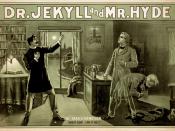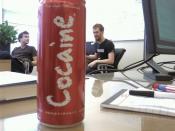Cocaine is an alkaloid found in leaves of the South American shrub Erythroxylon coca. It is a powerfully reinforcing psychostimulant. The drug induces a sense of exhilaration in the user primarily by blocking the reuptake of the neurotransmitter dopamine in the midbrain. If the predictions of The Hedonistic Imperative are vindicated, then future millennia will witness what Robert Anton Wilson once called "hedonic engineering". Mature enhancements of currently drug-induced states of euphoria will be transformed into a absolute presupposition of sentient existence. Life-long happiness will be genetically pre-programmed. "Peak experiences" will become a natural part of everyday mental health. Cocaine, alas, offers only a tragically delusive short-cut.
In pre-Columbian times, the coca leaf was officially reserved for Inca royalty. The natives used coca for mystical, religious, social, nutritional and medicinal purposes. Coqueros exploited its stimulant properties to ward off fatigue and hunger, enhance endurance, and to promote a benign sense of well-being.
Coca was initially banned by the Spanish. In 1551 the Bishop of Cuzco outlawed coca use on pain of death because it was "an evil agent of the Devil". The noted 16th century orthodox Catholic artist Don Diego De Robles declared that "coca is a plant that the devil invented for the total destruction of the natives." But the invaders discovered that without the Incan "gift of the gods", the natives could barely work the fields - or mine gold. So it came to be cultivated even by the Catholic Church. Coca leaves were distributed three or four times a day to the workers during brief rest-breaks.
Returning Spanish conquistadores introduced coca to Europe. Even Shakespeare may have smoked it - and inhaled. The plant is perishable and travels poorly. Yet coca was touted as "an elixir of life". In 1814, an editorial in Gentleman's Magazine urged...


